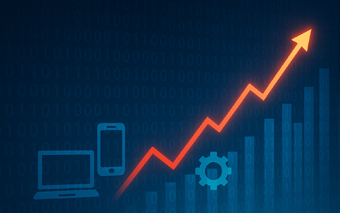
Rising Technology Prices in 2025: What's Driving Costs Up - and How to Prepare
As we head deeper into 2025, there's growing concern across industries about the rising cost of technology. From laptops and servers to the high-demand components powering AI and cloud infrastructure, businesses are already feeling the early effects of global pressures that are pushing prices higher.
While IT procurement teams have always had to manage cost volatility, recent events are intensifying the urgency to act decisively—and strategically. In this article, we explore what's behind the projected rise in technology prices and what organisations can do to get ahead of the curve.
Nvidia's Export Challenges and Industry Fallout
At the heart of this disruption is the ongoing export restriction saga involving Nvidia—one of the world's most important suppliers of AI chips.
The U.S. government recently expanded its restrictions on advanced semiconductor exports to China, impacting Nvidia's H20 chips—products that were themselves created to comply with earlier trade rules. As a result, Nvidia announced a staggering $5.5 billion financial hit, with immediate ripple effects across the global technology market. Their stock dropped nearly 7%, dragging down the broader tech sector.
While this may seem like a single-company issue, the implications are wide-reaching. Nvidia's chips power everything from AI infrastructure and research platforms to high-performance computing used by enterprises. With fewer chips flowing to major markets, prices will likely surge—especially for sectors reliant on cutting-edge GPU technology.
The Semiconductor Sector Enters Bear Territory
This isn't just about Nvidia.
The semiconductor sector as a whole has fallen into bear market territory, with a 30% decline in just two months. Market analysts point to a mix of issues driving this downturn:
- Geopolitical tensions, particularly between the U.S. and China.
- Export licensing requirements, slowing down cross-border component sales.
- Competitive pressure from emerging AI firms in Asia, like DeepSeek.
These developments create supply bottlenecks, uncertainty, and pricing volatility—all of which pose major challenges for procurement teams trying to plan long-term tech investments.
Tariffs and Trade Wars Reignite Cost Pressures
Adding fuel to the fire are the continued effects of tariffs and retaliatory trade measures.
The previous U.S. administration imposed sweeping tariffs on Chinese imports, and the response from China has been equally impactful. These include:
- A 125% tariff on U.S. exports - raising prices on U.S.-produced components entering China.
- Restricted exports of rare earth metals, vital for producing everything from smartphones to defence systems.
- Temporary exemptions for key consumer tech items, which may soon expire—introducing fresh uncertainty for businesses purchasing in bulk.
In this climate, long-term contracts, just-in-time procurement, and even routine purchasing processes are all under strain.
The Cost to Your Organisation
For businesses, these macroeconomic pressures translate into real, bottom-line impact.
- Delays in product availability.
- Higher prices for essential hardware and infrastructure.
- Shorter product lifecycles, increasing pressure on refresh cycles and support costs.
This environment makes it more important than ever to take a proactive approach to IT procurement, particularly in the first half of the year when budgets are still flexible.
What You Can Do Now: Secure Early, Analyse Better
To navigate this climate effectively, IT leaders and procurement professionals should:
- Accelerate purchasing decisions - secure pricing before further rises take hold.
- Increase visibility of supplier pricing history to identify when and where costs are surging.
- Diversify supply channels and consider alternative vendors with less exposure to tariff-heavy markets.
- Use spend analysis to review past purchases and forecast more accurately in an unstable market.
These steps can help organisations stay agile and make smarter investments in the face of global uncertainty.
Leverage KnowledgeBus to Stay Ahead
In challenging times, the right tools can make all the difference. KnowledgeBus is designed to help procurement teams not only track rising costs, but respond to them quickly and intelligently.
Key features tailored for today's climate include:
- Framework Pricing in History View - See benchmark pricing alongside framework contract rates for a more accurate view of best-value purchases.
- Interactive Charts - Pan, zoom, and filter procurement data to spot trends and price fluctuations at a glance.
- Streamlined Benchmarking List - Easily add key products to your list for ongoing tracking and alerts.
- Spend Analysis Export Filters - Focus on high-impact purchasing data and filter out noise from products with no purchase history.
With rising costs, unpredictable markets, and shrinking windows of opportunity, being proactive has never been more important.
Take control of your IT procurement strategy by seeing KnowledgeBus in action. Book your personalised demo today and discover how real-time benchmarking, supplier transparency, and smarter data analysis can help you stretch your IT budget further—no matter what the global market throws your way.